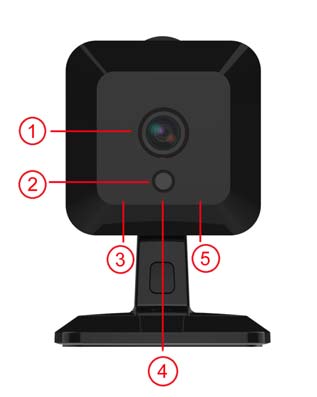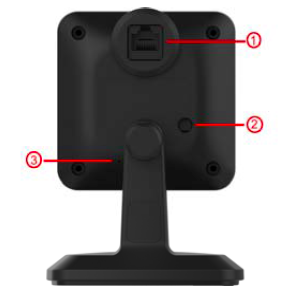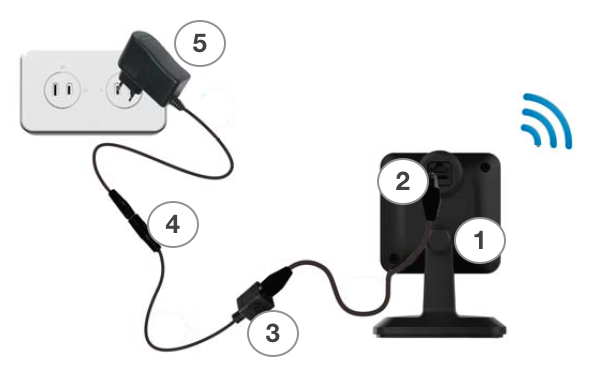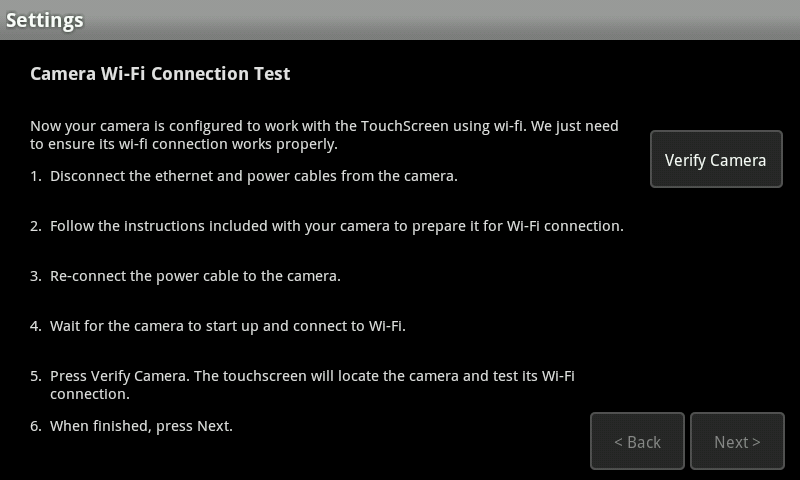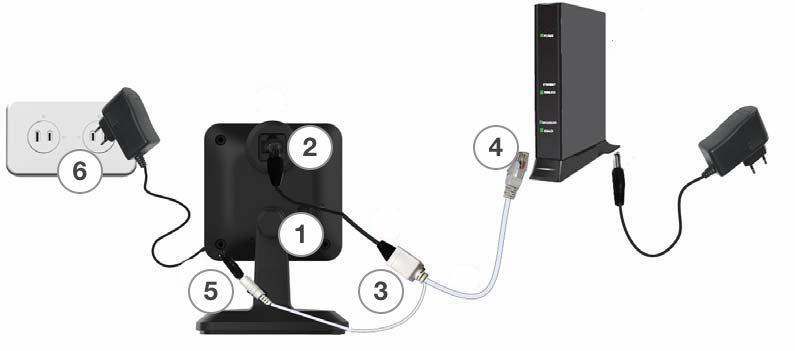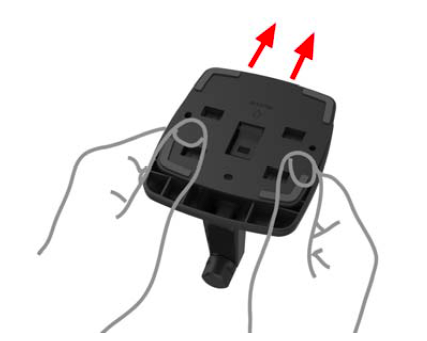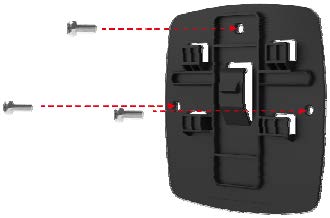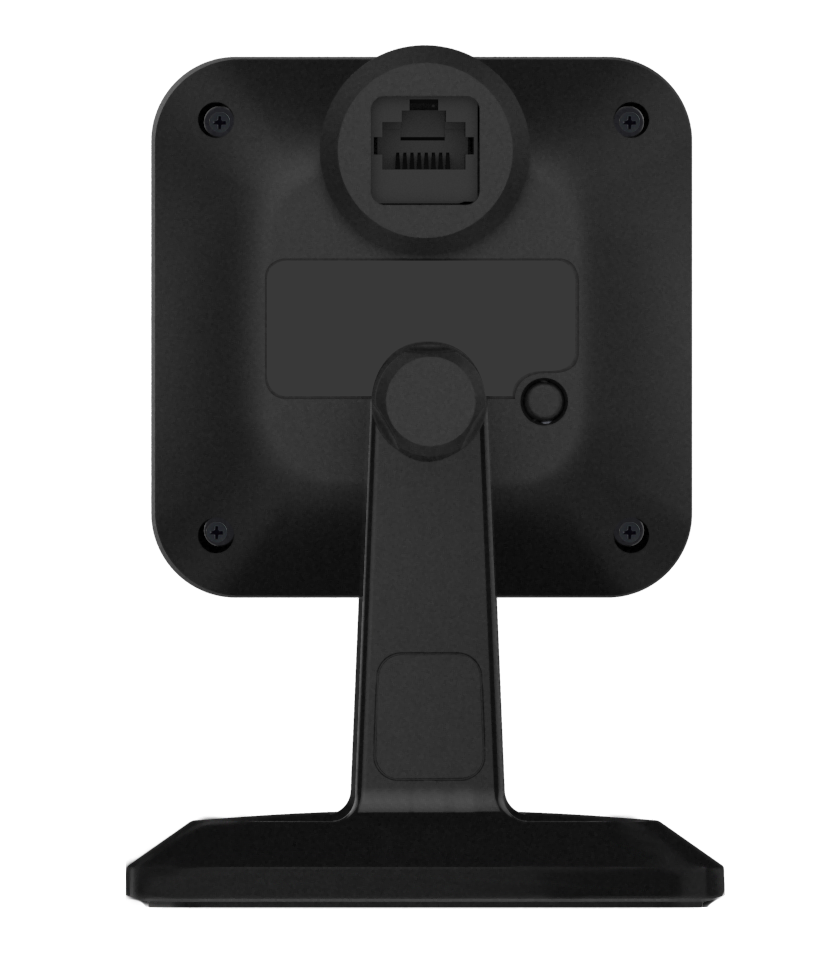If adding the iCamera2 Indoor/Outdoor camera to a non monitored automation system, click HERE for instructions.
The iCamera2 is a True Day/Night IP camera that features high definition 1280 x 720p video resolution and 802.11n WiFi connectivity. It supports H.264 Baseline, MPEG-4 and Motion-JPEG triple codec and two codec streaming simultaneously.The iCamera is a True Day/Night IP camera with VGA resolution and 802.11n WiFi connectivity. Click on the link below for a guide to pairing the iCamera to your system.
SpecificationsWhat’s In The BoxWireless Setup and PairingWired Setup and PairingPhysical InstallationResetting to Factory Defaults
SPECIFICATIONS
Delivers Excellent 720p HD (1280×720) Video Quality for
Surveillance Recordings
- Provides Dust & Water Protection with IP54 Rated Housing
- Dual Video Streaming (H.264, MJPEG) for High-Quality Videos
- Built-in Infrared LEDs for Night Time Illumination
- Simplified Wireless Network Setup with WPS Function
1. Light Sensor: This is hardware sensor to detect light in your surroundings.
2. Lens: No physical adjustment is required or possible for the lens, but you should ensure that the lens cover remain clean. The image quality is degraded if the lens cover is dirty or smudged.
3. POWER/WiFi indicator (Green)
- On (Green) – Power is on.
- Off – Power is off.
- Flashing – Wifi signal-strength indication. The LED indicates SNR for the first 5 minutes after the camera is powered on. Then it will stay solid to indicate power LED for 5 minutes when wireless setup is ready.
- Flashing Low (flashing interval: 100ms) – WiFi signal is weak. SNR: -95 ~ -74dB
- Flashing Middle (flashing interval: 250ms) – WiFi signal is normal. SNR: -75 ~ -60dB
- Flashing High (flashing interval:1000ms) – WiFi signal is strong. SNR: -60 ~ -40dB
4. Network indicator (Green)
- On – LAN/Wireless connection established.
- Off – No active connection on the corresponding LAN port, or not associated to Wireless AP.
- Flashing – Data is being transmitted or received.
1. LAN Port: Use standard Ethernet cable (RJ45 connectors) to connect your iCamera2 to the router for installation and configuration. The port is also used for power connection when the camera is under wireless mode. A customized PoE (Power over Ethernet) splitter, as a Y-cable, for both Ethernet and DC Jack is provided.
2.WPS/Reset This button has two (2) functions:
- WPS.
- WPS PBC Mode
- Turn on the camera without connecting the Ethernet cable.
- Wait for three minutes, and then press and release (less then 3 seconds). The WPS LED will start blinking. Press the WPS button on the gateway within two minutes.
- The WPS LED will be off and the Network LED will be on if the connection is successful.
- WPS Pin Code Mode
- Turn on the wireless camera without connecting the Ethernet cable.
- Wait for three minutes, and then press and hold the button for over three seconds (3 ~ 10 seconds). The WPS LED will start blinking. Get the pin code in the product label. Enter the pin code on the gateway within two minutes.
- The WPS LED will be off and the Network LED will be on if the connection is successful.
- Reset
- Power On.
- Keep holding the button down for more than 11 seconds, then release.
- WPS PBC Mode
3. Microphone: The microphone is turned off by default until changed by a user.
What’s In the Box
 |
 |
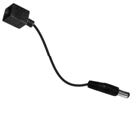 |
 |
 |
| Camera | Stand | PoE Adapter | AC Power Adapter | Y-Cable |
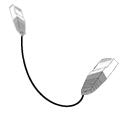 |
 |
|||
| Ethernet Cable | Dust Cap |
Installation (Wireless)
NOTE: The steps for wireless camera pairing are different than what appear on the Touchscreen.
1. Mount the Camera onto the camera stand by gently tightening the camera to the stand.
2. Connect the black Ethernet cable to the LAN port on the back of the Camera.
3. Connect the other end of the Ethernet cable to the ethernet end of the black PoE adapter.
4. Connect the other end of the PoE adapter to the power adapter.
5. Plug the power adapter into a live power outlet.
Joining the Camera to the Touchscreen
If using the Wireless camera pairing method, plug your camera into a power outlet located near your home router.
- Plug your camera into a power source located near your home router.
- Navigate to Settings > Home Devices > Cameras > Add a Camera
- If this is the first camera you are adding to your system, or it’s been awhile since a camera was added, you will be asked to run a Network test. Click ‘Next’ to begin the test and ‘Next’ again once the green check mark appears.
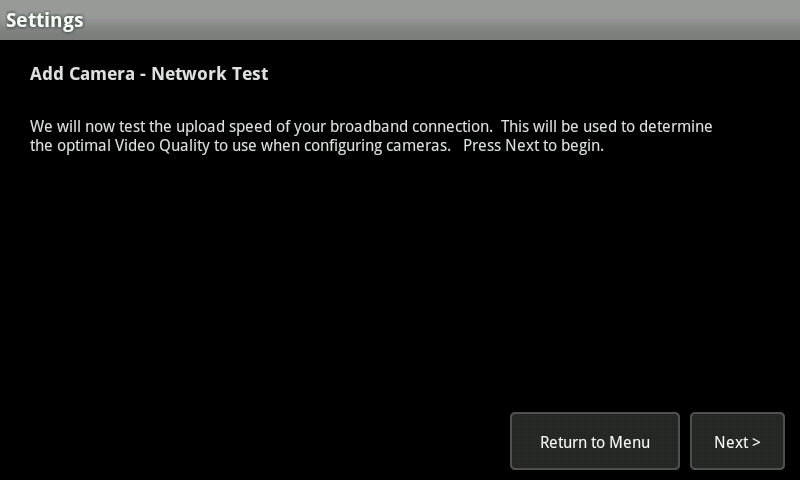
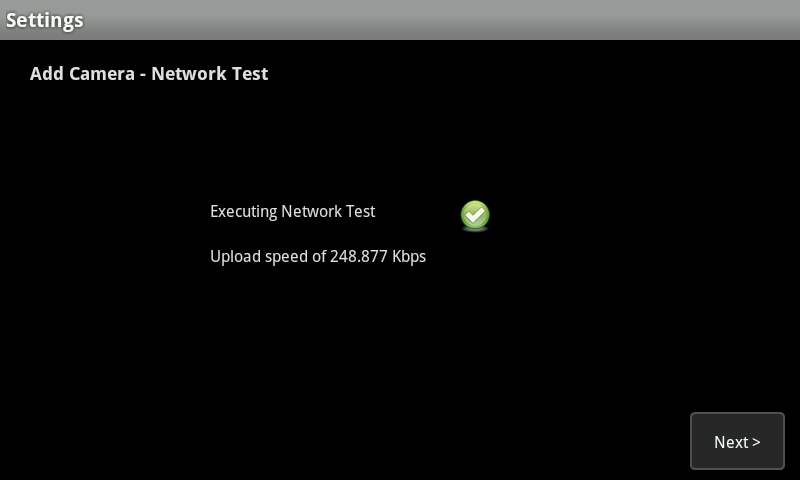
- The Hardware Setup page is displayed. Disregard the stated instructions on this page.
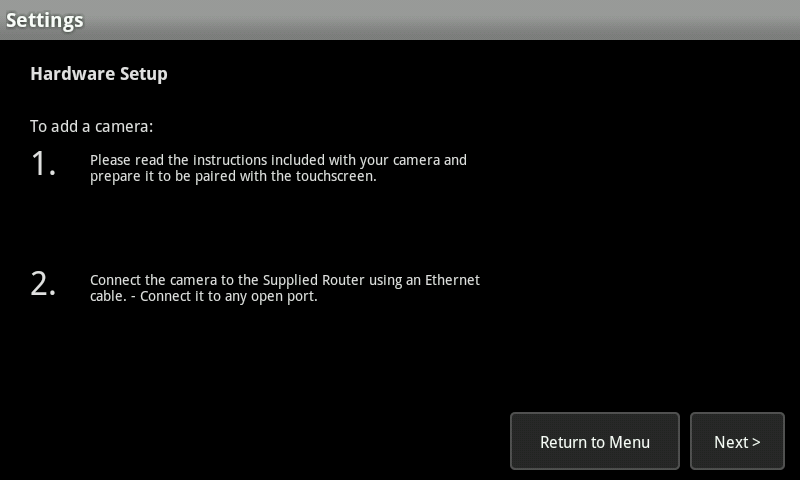
- The camera should now be displaying two green lights (they may be flashing or solid). If it is not, allow the camera to wait for 2 minutes
- Once the camera is displaying the two green lights, press the WPS button on your home router
- Press the WPS button located on the back side of the iCamera2 (small black button located near the bottom on the rear) until you feel it click and release the button.
- Press Next on the Touchscreen
- Once the Touchscreen locates your camera, you will be shown the general information. Click ‘Accept’ and then click ‘Next’ to proceed to the next screen.
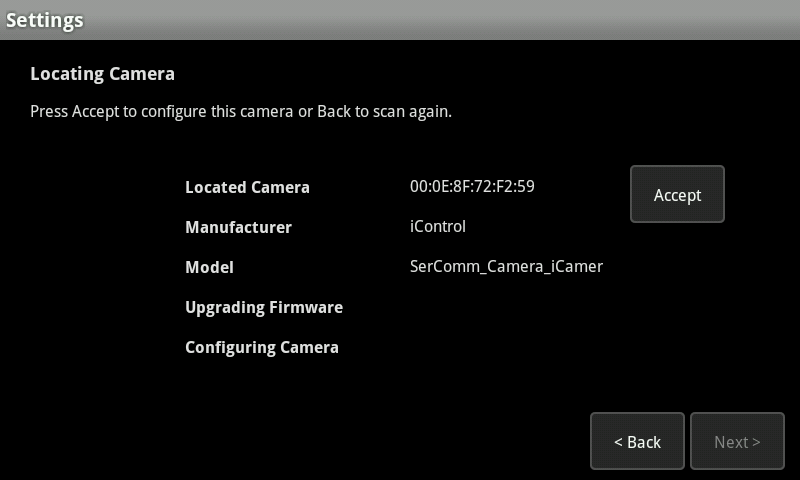
- The camera will now check to see if it’s firmware is up to date. If the camera firmware is at the minimum version needed, the option to skip any additional firmware upgrades will be presented. Tap ‘Yes’ to upgrade the firmware or tap ‘No’ to continue with the pairing process. The system will attempt to upgrade the camera within 24 hours after the camera has been added if the firmware upgrade was skipped.

- If an update is selected, it will download the file at this time. Once the ‘Upgrading Firmware’ and ‘Configuring Camera’ lines say ‘Done’ beside them, click ‘Next’ to proceed to the next screen.
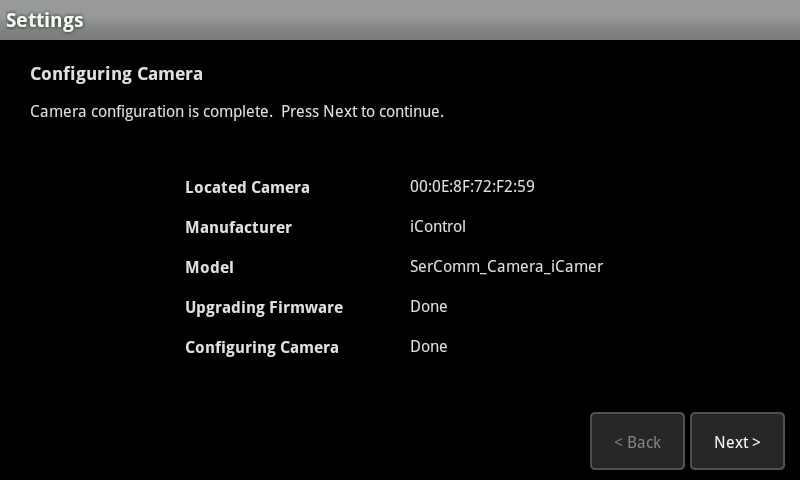
- Once the camera pairs, you will have the opportunity to give your camera a name and select the video quality. Make sure to give your camera name that you’ll recognize such as ‘Driveway Camera’.
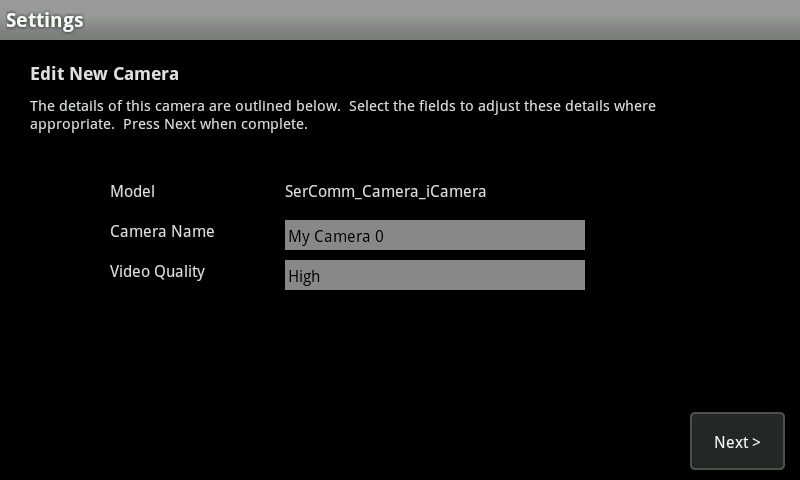
- Now that the camera is named, it’s time to locate it where you want. Unplug the power from your camera and locate it where you would like it to be. Once the camera is powered up with two green lights, select ‘Verify Camera’. Once the camera is located, click ‘Next’.
Note: The steps on this page are for wired connections. If using a wireless setup, these instructions will differ.
Installation (Wired)
1. Mount the Camera onto the camera stand by gently tightening the camera to the stand.
2. Connect the black Ethernet cable to the LAN port on the back of the Camera.
3. Connect the other end of the Ethernet cable into the Y-cable connector labeled “Camera”
4. Connect the other end of the Y-cable to any open LAN port on your router
5. Connect the Y-cable to the power adapter.
6. Plug the power adapter into a live power outlet and wait for the camera to show two green lights
Joining the Camera to the Touchscreen
- Navigate to Settings > Home Devices > Cameras > Add a Camera
- If this is the first camera you are adding to your system, or it’s been awhile since a camera was added, you will be asked to run a Network test. Click ‘Next’ to begin the test and ‘Next’ again once the green check mark appears.


- The Hardware Setup page is displayed. Press Next.

- Once the Touchscreen locates your camera, you will be shown the general information. Click ‘Accept’ and then click ‘Next’ to proceed to the next screen.

- The camera will now check to see if it’s firmware is up to date. If the camera firmware is at the minimum version needed, the option to skip any additional firmware upgrades will be presented. Tap ‘Yes’ to upgrade the firmware or tap ‘No’ to continue with the pairing process. The system will attempt to upgrade the camera within 24 hours after the camera has been added if the firmware upgrade was skipped.

- If an update is selected, it will download the file at this time. Once the ‘Upgrading Firmware’ and ‘Configuring Camera’ lines say ‘Done’ beside them, click ‘Next’ to proceed to the next screen.

- Once the camera pairs, you will have the opportunity to give your camera a name and select the video quality. Make sure to give your camera name that you’ll recognize such as ‘Driveway Camera’.

- Now that the camera is named, it’s time to locate it where you want. Follow the onscreen prompts to ‘Verify Camera’. Once the camera is located, click ‘Next’.
Physical Installation
Mounting
NOTE: Make sure your camera is configured and added to your system prior to permanently mounting.
Note: For outdoor usage, make sure to install rubber sleeve over ethernet connection.
Note: For outdoor usage, make sure to install under an eave or in other protected area
1. Remove the plate from the bottom of the stand
2. Place the plate on the desired position of the wall. Screw three screws into ceiling through the holes of the plate.
3. Attach the stand to the plate.
Resetting to Factory Defaults
- Make sure that the camera is powered on.
- On the back side of the iCamera2, there is a small black button. Hold this button down for 30 seconds to restore the camera to default settings. DEFAULTING THE CAMERA WILL REQUIRE IT TO BE REPAIRED TO THE TOUCHSCREEN.
- When the center LED (power) and the left most LED (network) are lit and stable, the camera is ready for pairing.

